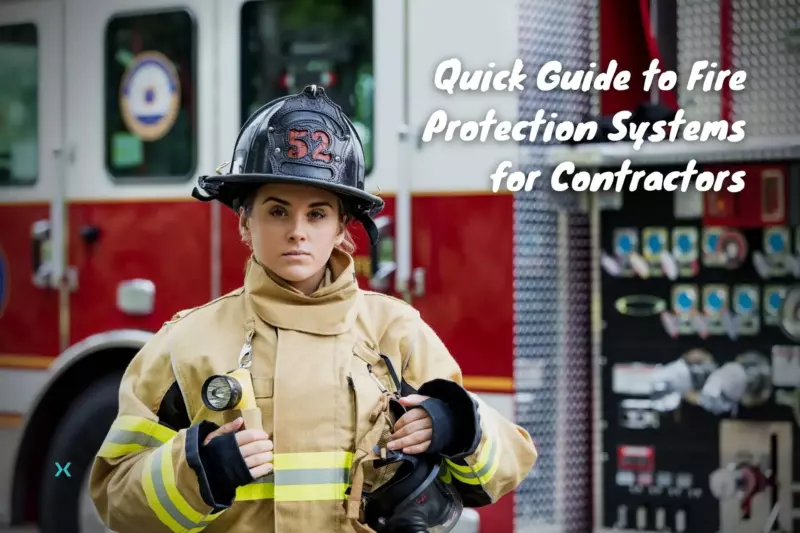As an HVAC contractor, it’s essential to understand the different elements of fire protection systems and how they are structured within a building so you can work safely around them.
In this quick guide, we’ll tell you everything you need to know about fire protection systems — from identifying the different types of systems to understanding why they are necessary for every building or property.
Table of Contents
🚒 What is a Fire Protection System?
A Fire Protection System is an apparatus that is designed to detect, control, and extinguish fires. It can include equipment such as fire alarms and detectors, sprinklers, fire extinguishers, and smoke control systems that work together to protect people and property from the dangers of fires.
🚒 Active Fire Protection vs. Passive Fire Protection
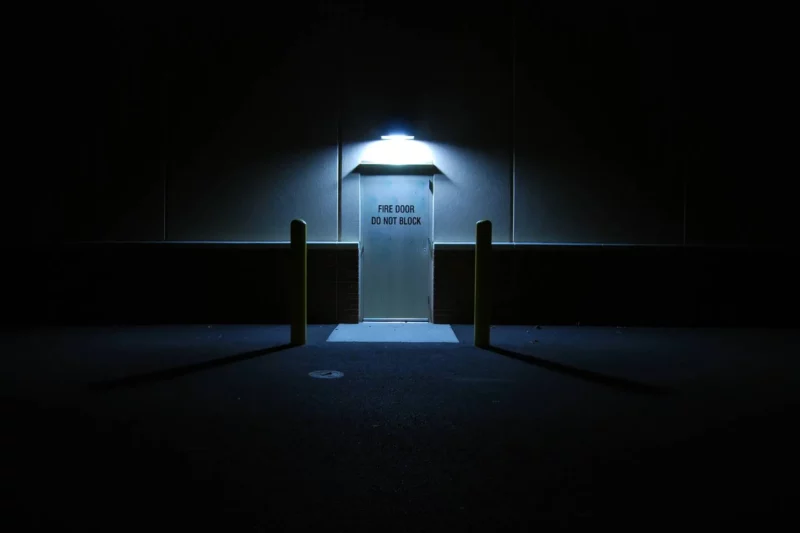
Active fire protection systems are those that require an additional source of energy or power to function.
Examples include sprinkler systems, flame detectors, and smoke detectors.
Passive fire protection systems do not need additional power sources and rely on natural containment methods such as fire barriers, fire doors, smoke vents, and heat-resistant materials.
The primary goal of both systems is to control the spread of a fire by containing it in one area until the necessary help can arrive.
🚒 Automatic Fire Sprinklers
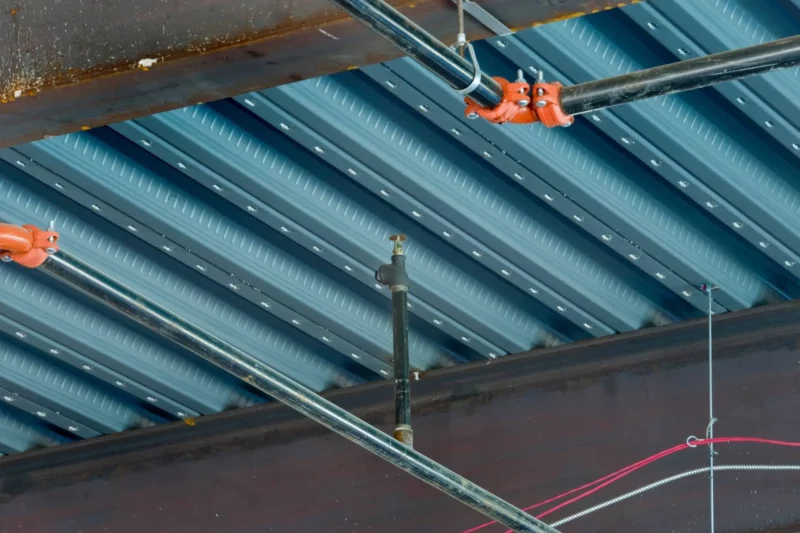
The first fire protection system you should know about is automatic fire sprinkler systems.
As the name suggests, these fire sprinkler systems automatically turn on when they detect fire within the area using heat detectors.
It will only operate automatically when the temperature reaches a certain point.
One common misapprehension with automatic fire sprinklers is that every sprinkler head will go off automatically all at once during a fire (thanks, Hollywood!).
However, you can find that only the deluge-type fire sprinkler system opens its sprinkler heads simultaneously.
Deluge-style sprinklers are not standard for commercial buildings but are commonly used in special facilities like aircraft hangers.
When automatic fire sprinklers detect fire, they usually disperse water only in areas where the fire happened, ensuring that other areas within the building stay dry.
Automatic fire sprinklers because they are effective at extinguishing a fire’s initial growth phase.
They spread continuous water flow over the fire until it extinguishes itself.
🔥 Wet Pipe Sprinkler Systems
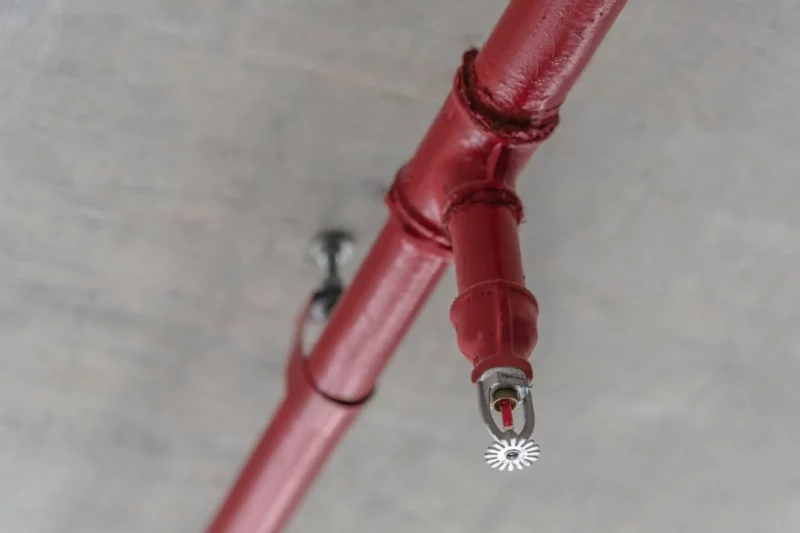
A wet pipe system is pretty much the standard for most commercial buildings.
Fire system technicians or the building’s maintenance personnel must ensure the lines stay full of water, providing efficient fire suppression.
You can get the wet pipe sprinkler system if you need a low-budget and low-maintenance fire sprinkler system.
🔥 Dry Sprinkler Systems
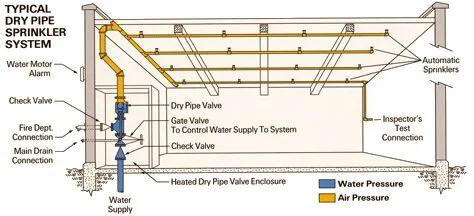
If you don’t want to get the building’s interior wet, you can go for the dry sprinkler system. It uses pressurized air or nitrogen within the pipes.
These are usually located in a heated space.
The dry-pipe valve stops water from passing through the pipes until a fire erupts and causes one or several sprinklers to turn on and extinguish the fire.
When a fire happens, the air exits, and the dry-pipe valve releases.
🔥 Pre-Action Fire Sprinkler Systems
Pre-action fire sprinkler system works and looks the same as dry sprinkler systems.
They don’t hold water inside the sprinkler pipes and are also filled with compressed air or nitrogen.
The only difference is that pre-action systems have a pre-action valve controlling the water flow.
The water only passes through the pipes if the heat detectors or smoke alarms go off.
You can find them installed in specific locations such as data centers or libraries.
These are used to prevent water damage caused by accidents.
🔥 Deluge Fire Sprinkler System
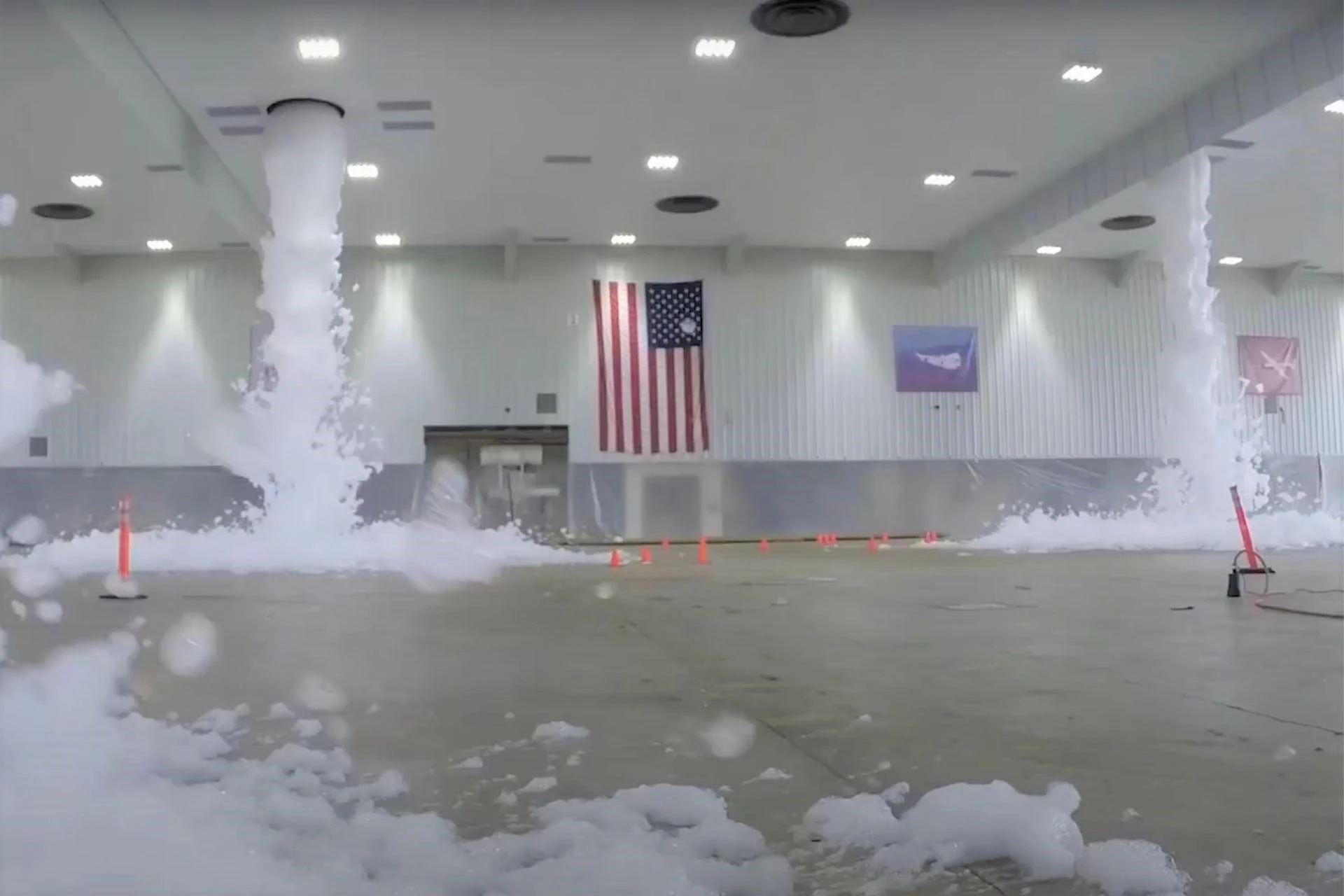
Lastly, the deluge fire sprinkler system has open sprinkler heads and unpressurized piping.
These are connected to the nearest water supply and only activate when it detects smoke or heat.
It is the complete opposite of the wet pipe fire sprinkler system because the deluge fire system opens all of its sprinkler heads at once.
While it may not be an effective way of keeping other areas dry, you can best bet that it can extinguish the fire as quickly as possible, no matter where it starts.
Automatic fire sprinkler systems are typically installed during the construction of a building.
Building owners can also upgrade their fire suppression systems if they need to update their old systems or if their technicians find something faulty.
Building owners must also keep their fire sprinklers in top condition to ensure they follow the state’s relevant fire safety and building codes.
🚒 Standpipe Systems
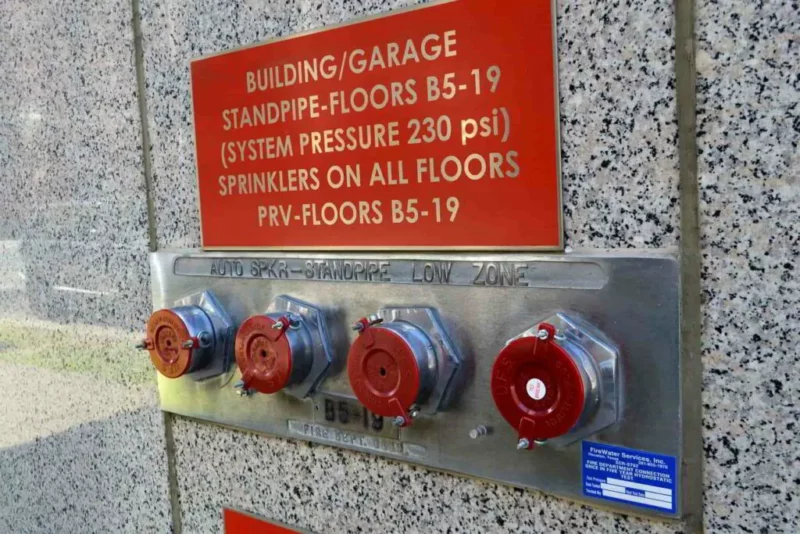
Another fire protection system that all contractors should know about is standpipe systems.
They also act like a fire hydrant that you would usually see near sidewalks, but it is a fire hydrant located within the building.
A standpipe system has a series of interconnected pipes which lead to the water supply by utilizing hose connections.
When the fire sprinkler system runs out, the firefighters can step in and extinguish the remaining fire.
Usually, building fires happen in higher building levels, so connecting their fire hoses to fire trucks or fire hydrants is impossible.
That is when they will need to use the standpipe system, gain easy water access, and extinguish the fire as quickly as possible.
Fire system installers would usually place them in strategic locations that firefighters can easily reach and use at a moment’s notice.
Examples of areas that contractors place them are in stairways, corners, behind walls, pillars, or any location as long as it doesn’t ruin the building’s aesthetics.
Standpipe systems are installed on every floor of a tall building because you will never know at which level the fire might happen.
🚒 Smoke Ventilation and Control
Smoke ventilation systems such as smoke vents are important to meeting fire-building safety codes in commercial and industrial buildings.
This fire protection device is vital for releasing smoke, heat, and other hazardous gases from within the building when a fire breaks out.
The vent is triggered by a fusible link that automatically opens the hatch once temperatures reach a certain point, eliminating the need to open it manually.
Smoke Control Systems are designed to manage the spread of smoke from fires.
The system pre-empts the movement of smoke and toxic fumes by controlling airflows, ventilation, and pressure to contain them within a designated area.
This can be done through natural or mechanical means, such as using dampers and vents throughout the building.
Smoke Control Systems provide an important layer of protection in ensuring the safety of everyone in the building by reducing their exposure to potentially hazardous substances.
🚒 Fire Alarms
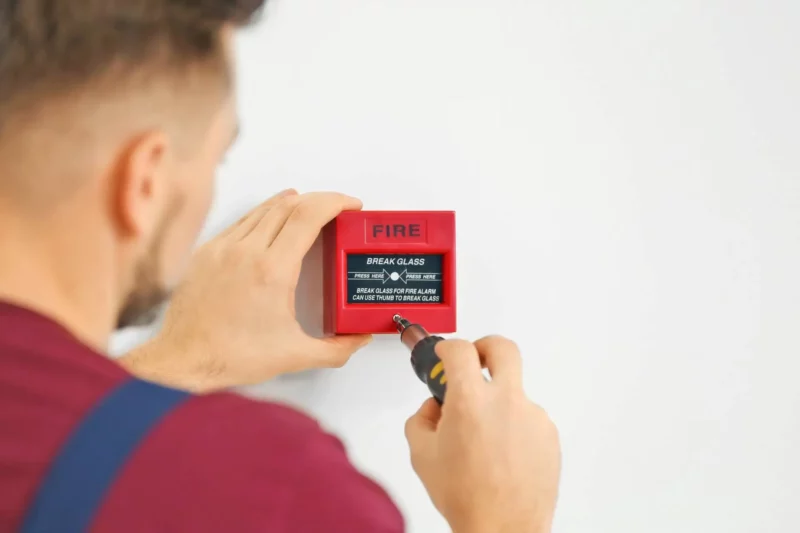
When the building’s fire alarms detect a sudden increase in temperature, they will give off a loud sound, either in the form of a siren or a beep, depending on what alarm sound the building owner chooses.
The alarm also needs to be loud enough for everyone within the building to hear, no matter where a person is.
Even if they are located in a conference room or a soundproof cubicle, the fire alarm sound must penetrate every surface to warn the building occupants about the fire.
And if a person detects a fire, they can pull the alarm trigger manually to set off the alarm.
It is the best option for people to do instead of waiting for the smoke or heat detectors to go off since systems cannot necessarily perceive fires, unlike humans.
They can only detect when the smoke gets too thick, or the temperature suddenly spikes.
🚒 Finally
As a contractor, it is important that you are up-to-date on the different types of fire protection systems available on the market.
This quick guide should give you a better understanding of some of the most common fire protection systems and how they work.
Remember, it is always better to be safe than sorry when it comes to protecting your customers’ homes and businesses from fires.
Want to learn more about your trade? Feel free to check out our other contractor articles!

